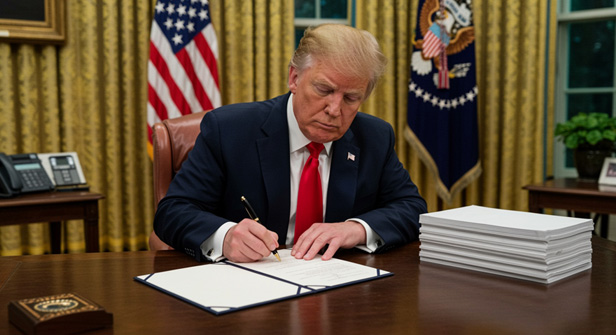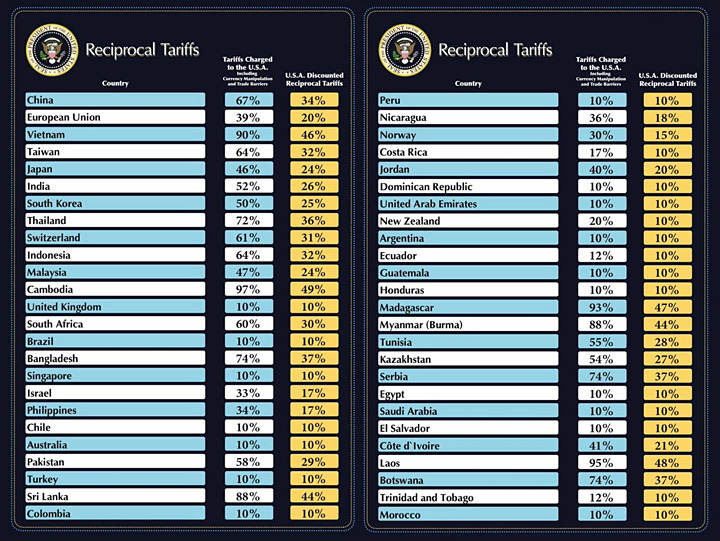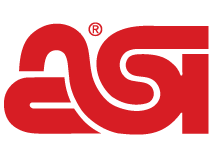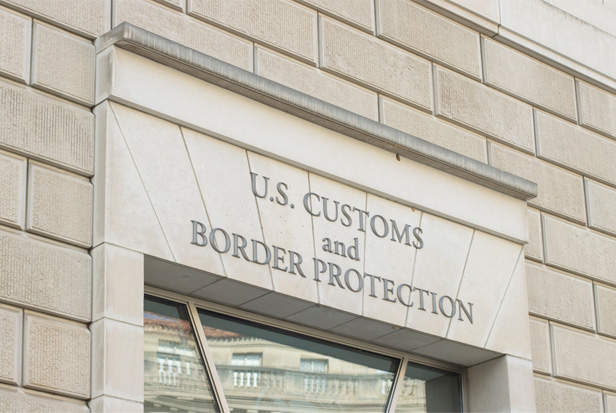News CANADIAN NEWS April 03, 2025
The Fallout From Trump’s ‘Worse Than Expected’ Tariffs
Promo leaders expect the sweeping new levies, announced by the president on April 2, to cause soaring price hikes, damage the economy and reduce demand for branded merch.
Key Takeaways
• New Tariffs: President Donald Trump announced sweeping new U.S. tariffs on imports, including a 10% baseline and higher country-specific rates.
• Deep Impacts: Higher tariffs will affect the promo industry through increased costs that will cause companies to alter product pricing, sourcing and inventory management. Price hikes, sales declines and margin pressures are in the cards.
• Broader Economic Concern: There’s fear the tariffs will trigger rampant inflation, a recession and global growth slowdowns.
• Still Fighting: Despite challenges, industry professionals said they’re committed to adapting and overcoming the challenges.
Worse than expected.
That’s the phrase that Chris McKee, chief revenue officer at Counselor Top 40 distributor Geiger (asi/202900), used to describe the new baseline tariff rate on virtually all imports of 10% that President Donald Trump announced April 2, as well as the country-specific and higher “reciprocal” tariffs the U.S. leader placed on imports from certain nations around the globe. Trump also eliminated the de minimis exemption importing rule as it pertains to China and Hong Kong.

“These tariffs will have broad and deep impacts across the economy – and our industry won’t be exempt from the pain,” McKee said. “Clients will undoubtedly reassess their promotional spending in light of rising costs on their end. It’s difficult to imagine a scenario where they proceed with purchases as originally planned.”
Such downbeat notes were sounding throughout the U.S. and Canadian promotional products marketplaces in the wake of Trump’s Tuesday tariff barrage.
On a day he called “Liberation Day,” Trump said the tariffs will help usher in a new era of prosperity for the United States, bolstering domestic manufacturing, enhancing national security and making “America wealthy again.” He said the tariffs marked America’s “declaration of economic independence.”
“These tariffs are a gut punch to the promotional products industry, but promo isn’t going anywhere. The road ahead won’t be easy, but our industry has been through challenges before, and we’ll get through this one too.” Tim Andrews, ASI
However, critics said the tariffs, if left in place, are going to spike inflation and disrupt the economy. “The scale of these tariffs raises concerns about growth risks,” said Tai Hui, APAC chief market strategist at J.P. Morgan Asset Management, as reported by CNBC. “U.S. consumers may cut back on spending due to pricier imports, and businesses might delay capital expenditures amid uncertainty about the tariffs’ full impact and potential retaliation from trade partners.”
In the promo products industry in particular, leaders said these and previous tariffs the president has implemented on China, Canada and Mexico, as well as steel and aluminum, will affect everything from product pricing, sourcing practices, inventory and cash flow to end-client investment in merch – both the types and quantities of items they buy.
“All businesses in North America are taking a second look at headcount, capex investment and marketing spend plans due to tariffs … which is impacting spend across all categories of promotional products,” said Chris Anderson, CEO of Counselor Top 40 supplier HPG (asi/61966) and a member of Counselor’s Power 50 list of promo’s most influential people. “For instance, even for products that are 100% manufactured in the USA, we are seeing average order values decline in the first quarter of 2025 – even as order counts remain strong.”
Tim Andrews, president and CEO of ASI, said "these tariffs are a gut punch to the promotional products industry. We’re talking about real businesses, real jobs and real economic impact – not just numbers on a spreadsheet. Our $26.6 billion industry relies heavily on global trade, with 90%-95% of hard goods coming from China alone. Higher tariffs mean higher costs, tighter margins, and tough choices for distributors and suppliers who are already navigating economic uncertainty.”
Andrews said the tariffs announced April 2 are much more significant than expected and will have a far-reaching impact on promo and the entire economy. “Tariffs on many countries where suppliers have moved production since the original Trump tariffs on China – such as Vietnam, India and Thailand for instance – will be especially difficult,” Andrews said. “Beyond promo, what is basically a national sales tax of 30% and more will lead to inflation and a marketplace climate that isn’t conducive to business.”
The Tariff Breakdown
Based on Trump’s April 2 tariff action, practically any import coming into the United States will be subject to a minimum 10% “baseline” tariff. However, the Trump administration tailored specific higher tariff rates for nations the president deems “bad actors” in their trade relations with the U.S.
These rates, according to reports, are based on the country’s tariff rate on U.S. goods, as well as what the administration describes as a calculation of the costs of the subject nation’s “currency manipulation” and non-tariff barriers it places that limit U.S. companies’ ability to do business within its borders. Trump and his administration then appeared to take the calculated figure and cut it in half to arrive at what’s the tariff rate he’s placed on the country’s exports to the United States.

The “reciprocal” tariff rates that President Donald Trump announced on countries around the world on April 2.
For instance, he added an additional 34% tariff rate to products coming from China. That’s on top of a 20% higher rate he implemented over two orders earlier this year, meaning tariffs on imports from China have been saddled with an additional 54% duty from what they were at the start of 2025.
In addition to China, the nation from which promo imports the most, there are high reciprocal tariff rates for several key nations from which the promotional products industry and other industries source goods.
These reciprocal tariff rates are set to take effect April 9.
“I think everyone is in shock right now,” said Jing Rong, vice president of supply chain and sustainability at HPG. “The scope and scale of the tariffs went far beyond what I expected.”
Who Pays the Tariffs?
U.S. companies importing products into the country are responsible for paying the levies, not foreign companies and foreign governments. This increases costs for U.S.-based importers. Importers often pass these costs along, driving up prices for consumers and other businesses that ultimately buy the importers’ products.
Countries getting the 10% baseline tariff rate include Turkey, Honduras, the United Kingdom, Singapore, Brazil, Australia, New Zealand, Colombia, Argentina, El Salvador, United Arab Emirates and Saudi Arabia. The baseline rate takes effect April 5.
Notably, the tariff rates are on top of any other duties applicable to imported products. That has more cost implications for promo. Last month, Trump removed duty exemptions and increased tariff rates on imported steel and aluminum to 25%. As such, it’s possible that if bringing stateside products with steel and aluminum that were made in China, promo importers would be responsible for both the additional 54% China rate and the 25% steel/aluminum rate on the content of their product that is made from those metals.
In another April 2 executive order, Trump removed the “de minimis exemption” for imports of products originating in China or Hong Kong effective May 2 and subjected those imports to ad valorem duties of 30% (in place of any other duties), plus $25 per postal item starting on May 2. That latter charge rises to $50 per postal item starting on June 1.
“The extent and depth of these tariffs will have a massive impact, not only on the promo industry but on the whole economy of the U.S. and the world. The immediate impact will be price increases that will hit manufacturers, distributors and consumers in the coming days and weeks.” Jose Gomez, Edwards Garment (asi/51752)
The de minimis exemption had allowed imports valued at less than $800 to come stateside duty free. Looking ahead, Trump is reportedly planning to eliminate the de minimis exemption for imports coming from most countries once the Department of Commerce indicates that sufficient systems are established to process and collect the levies.
Trump didn’t address Canada and Mexico in his April 2 tariff actions. Instead, the 25% tariff rates he previously applied to goods originating from those countries that are not covered by the United States-Mexico-Canada Agreement (USMCA) remain in effect. Canadian energy products are subject to a 10% tariff. The USCMA exemptions appeared to have remained in place as of April 3.
Additionally, Trump also put into place a 25% tariff rate on imported automobiles from any country. There’ve been actions in congress to limit Trump’s tariff-enacting power and push back against the Canada tariffs. Also, the New Civil Liberties Alliance, a civil rights group, has filed a lawsuit against Trump’s China tariffs in particular, saying the International Emergency Economic Powers Act he invoked to institute the levies does not, in fact, allow him to apply tariffs.
“By invoking emergency power to impose an across-the-board tariff on imports from China that the statute does not authorize, President Trump has misused that power, usurped Congress’s right to control tariffs, and upset the Constitution’s separation of powers,” said Andrew Morris, senior litigation counsel at NCLA.
Still, the congressional actions aren’t expected to prevail and the lawsuit has been assigned to a federal judge appointed by Trump. As of now, the Trump levies look likely to remain.
“Our rough calculation is that the 2nd April announcement will take the U.S. average tariff rate to above levels seen in the 1930s after the Smoot/Harvey tariffs, which will in turn add to the risk of a U.S. recession – via a further blow to confidence and supply chain disruptions – and a bigger hit to global growth,” said Shane Oliver, head of investment strategy and chief economist at AMP. “The risk of a U.S. recession is probably now around 40% and global growth could be pushed towards 2% (from around 3% currently) depending on how significant retaliation is and how countries like China respond with policy stimulus.”
“Costs are higher, and I suspect we’ve lost some orders to fruit baskets, gift cards and non-industry products.” Craig Nadel, Nadel (asi/279600)
Some are holding out hope that Trump’s tariffs will compel other nations to drop or curtail their tariffs and alleged trade barriers on the U.S., leading Trump to reduce or nix his tariffs. How that plays out remains to be seen. Already the U.S. was facing retaliation, including from China, which was implementing a 34% tariff on U.S. imports effective next week. The European Union was also vowing countermeasures.
Complicating things further: The White House is considering charging China-based shipping companies and shipping companies that use China-made ships potentially millions of dollars every time one of their vessels enters a U.S. port – something that could exponentially increase importing/exporting fees, damage the economy and cause supply chain disruption on levels experienced during the COVID-19 crisis, critics from across industries have warned.
The Office of the United States Trade Representative held public hearings last week on the fee proposals in which it heard widespread opposition to the plan. No update on port fees was announced April 2.
Big Challenges But ‘Don’t Count Our Industry Out’
As an industry, promo is heavily reliant on global supply chains. The impact of Trump’s tariffs on the promotional products industry stands to be profound.
“The extent and depth of these tariffs will have a massive impact, not only on the promo industry but on the whole economy of the U.S. and the world,” said Counselor Power 50 member Jose Gomez, CEO/president of Counselor Top 40 supplier Edwards Garment (asi/51752). “The immediate impact will be price increases that will hit manufacturers, distributors and consumers in the coming days and weeks.”
Gomez said the uncertainty and lack of clarity that preceded the tariffs forebode that changes to them could be coming. “This makes it very difficult for companies to make short-term (one to three years) and long-term (five to 10 years) decisions as to where to source product from or where to locate and grow owned and operated manufacturing capacity,” the CEO stated.
Kathy Finnerty Thomas, president of Counselor Best Place to Work distributor Stowebridge Promotional Group (asi/337500), said the tariffs will drive the “worst inflation we have ever seen. Unemployment will rise. There will be a global recession. These tariffs are particularly devastating for our industry. Many companies have been moving sourcing away from China. Now, some of the countries that are targeted the most heavily in the new tariffs are ones where production was being moved to.”
“Pessimism is not an option in business. I am sure we will find a way to thrive and serve our customers with outstanding branding options.” Kathy Finnerty Thomas, Stowebridge Promotional Group (asi/337500)
To wit: Vietnam, Bangladesh, Pakistan and India, among others, have increasingly hosted apparel and headwear production for promo and the clothing industry more broadly in recent years, meaning the new tariffs there could drive up garment pricing. Promo hard goods, which often originate from China, were already well in the price-hike crosshairs prior to April 2.
Power 50 member Trevor Gnesin, CEO of Counselor Top 40 supplier Logomark (asi/67866), said suppliers will have to raise their prices sooner than later, or risk putting themselves out of business. Failure to do so – and probably within the next month or so – can lead to serious cash flow problems and inadequate finances to maintain necessary inventory levels, he said. He further noted that securing financing for inventory will be more difficult, as some banks are reducing lending, making it more difficult to get the necessary additional cash.
“If companies do find the cash, it will be at a higher cost,” Gnesin said. “Most companies have had huge increases in costs this year and with sales flat or down, it’s hard to generate profits to finance the increase. This is worse than tariff increases, because if suppliers wait too long to adjust their prices, they will find themselves in a dire situation within six months, not being able to maintain inventory levels, which will eventually lead to the same stock gap situation we saw during 2020/21 with COVID.”
Counselor Power 50 member Yuhling Lu picks up the same theme. The co-owner/CEO of Counselor Top 40 supplier Ariel Premium Supply (asi/36730) said the Missouri-based firm has been moving some production out of China but even with that, the number of items it still sources from China, combined with new tariffs on so many countries, makes price increases a guarantee.
“We will be increasing our prices,” said Lu. “It simply is not possible to absorb these tariffs.”
Some have touted USA-made products as an option and point of stability and, as ASI Media has reported, sales of domestically produced promo items may well increase in the wake of the tariffs. Austin, TX-based Sock Club (asi/88072), for instance, said that its vertically integrated, U.S.-based production model is proving to be a strategic advantage, providing customers with reliability. “Our American-made custom socks aren’t affected by these international trade uncertainties, allowing us to maintain our pricing, quality standards and industry-leading turnaround times of just three days,” the firm said in a statement.
Still, there’s not nearly enough U.S.-made product available to meet the broad needs of the promotional products market. And, industry supply chain experts have repeatedly emphasized that it’s highly unlikely that a massive reshoring of promo production will be feasible or occur. Even if it did, it would take years to establish such supply lines. “Those days are long past,” said Finnerty Thomas. Others suspect at least some Made-in-the-USA providers will inch up pricing as the market can bear, given the price jumps on imported goods.
“Don’t count our industry out. Our medium remains one of the most cost-effective tools for brand communication, and a consultative salesperson will always find a path to success.” Chris McKee, Geiger (asi/202900)
The tariffs themselves and uncertainty over how they may change again is weighing on distributors and their end-clients.
“Costs are higher, and I suspect we’ve lost some orders to fruit baskets, gift cards and non-industry products,” said Counselor Power 50 member Craig Nadel, CEO/president of Counselor Top 40 distributor Nadel (asi/279600). Indeed: he pointed to one sales pro who lost approximately $200,000 in sales volume in the past few weeks due to trade war/tariff issues.
“The on again and off again nature of tariffs has also made business more complicated,” Nadel added. “We have to go to the clients and say ‘The price is X, now it is Y, now it is X again.’ The clients are pretty understanding and of course this is not unique to our industry but it is a hassle.”
Despite all the challenges, promo pros certainly aren’t throwing in the towel.
Said Geiger’s McKee: “Don’t count our industry out. Our medium remains one of the most cost-effective tools for brand communication, and a consultative salesperson will always find a path to success.”
Added Finnerty Thomas: “With 30 years in the industry, we have faced many devastating times and have found a way to pivot for success. Pessimism is not an option in business. I am sure we will find a way to thrive and serve our customers with outstanding branding options.”
Andrews, ASI’s president and CEO, stated: “Promo isn't going anywhere. The smartest businesses will adapt – negotiating harder, finding efficiencies and proving to clients that branded merchandise delivers ROI that outperforms other marketing channels. ASI is here to help, whether it’s through expert panels at our trade shows or breaking news coverage at asicentral.com/tariffs. The road ahead won’t be easy, but our industry has been through challenges before, and we’ll get through this one too.”

